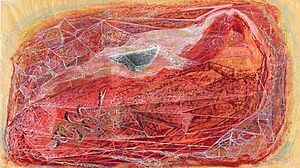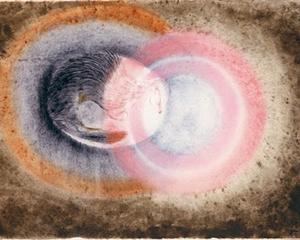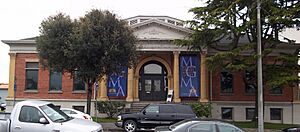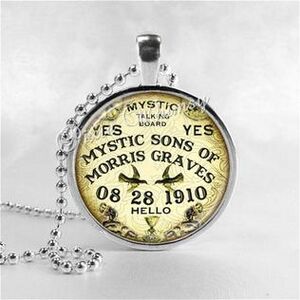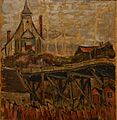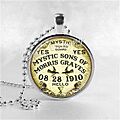Morris Graves facts for kids
Quick facts for kids
Morris Graves
|
|
|---|---|
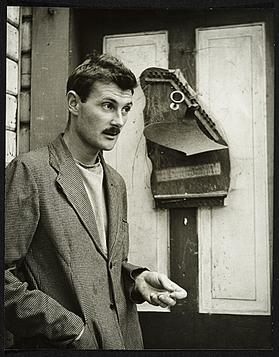
Morris Graves, 1938. Photo by Robert Bruce Inverarity. Archives of American Art, Smithsonian Institution
|
|
| Born | August 28, 1910 |
| Died | May 5, 2001 (aged 90) |
| Nationality | American |
| Known for | Painting |
| Movement | Abstract Expressionism, Northwest School |
Morris Cole Graves (born August 28, 1910 – died May 5, 2001) was an American painter. He was one of the first modern artists from the Pacific Northwest to become famous around the world. His art style, sometimes called Mysticism, used soft colors from the Northwest. He also used ideas from Asian art and philosophy.
Graves often painted birds, flowers, and other symbols. These images helped him explore ideas about how we think and see the world. A magazine article in 1953 made Graves well-known as a key artist of the 'Northwest School'. He lived mostly in Washington state. He also spent time traveling and living in Europe and Asia. He spent his last years in Loleta, California.
Contents
Morris Graves' Early Life
Morris Cole Graves was born on August 28, 1910. His family had moved to Fox Valley, Oregon, about a year before he was born. They came from Seattle, Washington. They wanted to claim land under the Homestead Act. Morris was named after a minister his parents liked. He had five older brothers and two younger siblings.
Life on the farm was very hard. Strong winds and cold winters made it tough to grow crops. This struggle led to his father's paint and wallpaper store in Seattle going out of business. In 1911, Morris's family moved back to the Seattle area. They settled in a country-like area called Edmonds, Washington.
Morris Graves taught himself how to paint. He had a natural talent for using colors and lines. He left high school after his second year. From 1928 to 1931, he worked on steamships with his brother Russell. They visited many major ports in Asia. When he arrived in Japan, he felt a strong connection. He wrote that it felt like "the right way to do everything." He felt it was about accepting nature, not fighting it.
Morris Graves' Art Career
Starting as an Artist
In his early twenties, Morris Graves finished high school in 1932. He was living with his aunt and uncle in Beaumont, Texas at the time. He then returned to Seattle. He first gained recognition as an artist in 1933. His painting Moor Swan won an award at the Seattle Art Museum's Northwest Annual Exhibition. The museum also bought the painting. He spent his time between Seattle and La Conner, Washington. There, he shared a studio with another artist, Guy Anderson. Graves' early paintings were done with oils. They often showed birds that looked strange. Some were blind, wounded, or caught in webs of light.
Graves began studying Zen Buddhism in the early 1930s. This was a lifelong interest for him. In 1934, he built a small art studio on his family's land in Edmonds, Washington. In 1935, the studio burned down. Almost all of his artwork from that time was lost. His first solo art show was in 1936 at the Seattle Art Museum (SAM). That same year, he started working for the Federal Art Project. This was a government program that helped artists during the Great Depression. There, he met Mark Tobey and was impressed by Tobey's unique drawing style.
In 1937, Graves traveled to New York City. He studied with a religious group called the International Peace Mission movement. When he returned in May, he bought 20 acres (about 8 hectares) of land on Fidalgo Island. In 1938, he left the Federal Art Project. He went to the Virgin Islands and Puerto Rico to paint.
In 1940, Graves started building a house on his Fidalgo Island property. It was on a lonely point of land. He called it The Rock. He lived at The Rock with many cats and dogs. He named all of them Edith, after a poet he admired.
Life at The Rock
Morris Graves was known for his friendly personality and funny jokes. But he also spent long periods alone. He loved being in nature and focusing on his art. At The Rock, during World War II, he stayed mostly by himself. He created many paintings during this time.
Many of these paintings, like Dove of the Inner Eye (1941), showed birds caught in webs or thorns. These images showed his worries about people and nature surviving in a world with modern factories and war. His quiet life was interrupted in 1942. The Museum of Modern Art in New York held an exhibition. Critics loved Graves' paintings. Museums and collectors quickly bought them all.
At the same time, the U.S. Army was looking for him. He had applied to be a conscientious objector (someone who doesn't want to fight in war because of their beliefs). He was also suspected because of his connection to the International Peace Mission. Also, his friends, the Japanese-American designer George Nakashima and his wife, had visited him. They were later sent to a special camp during the war. While his art was being shown and sold, Graves was held at Camp Roberts, California. He felt very sad during this time. He was finally released from military service in March 1943.
With help from supporters, Graves' art stayed popular during and after the war. He had many exhibitions. In the late 1940s, he bought land in Woodway, Washington. He started building a unique house there. He called it "Careladen."
The Careladen Years
Graves received a special grant to study in Japan. But he only made it to Hawaii. The U.S. military in Japan stopped him from entering the country. He spent several months in Hawaii in 1947. He painted and learned Japanese there.
By the late 1940s, Graves' and Mark Tobey's fame in the New York art world had lessened. New art styles, like Abstract Expressionism, became more popular.
In 1949, Graves sailed to England. He stayed with an art collector for a month. Then he spent three lonely winter months in France. He sketched and painted the Chartres Cathedral. This quiet time might have been because some critics said his recent paintings were not deep enough. But after returning to Seattle in 1950, he destroyed most of his Chartres works.
In 1953, Graves held a unique art event in Woodway Park. He sent invitations to many people. The invitation said they were "not invited" to an exhibition of paintings. Guests arrived to find the driveway blocked. They found a banquet table with old food. A garden sprinkler was spraying it. Music and farm animal sounds played. Graves and his friends would not answer the door. Guests were either amused or annoyed. Some left, some sketched the scene, and some even took silverware!
In September 1953, Life magazine published a big article. It was about the "Mystic Painters of the Northwest." It focused on Graves, Mark Tobey, Kenneth Callahan, and Guy Anderson. They were seen as the main artists of the Northwest School. But by this time, the four artists were not getting along well.
Graves' paintings in the middle of his career were influenced by East Asian ideas. He used them to connect with nature directly. He used parts of Chinese and Japanese art, like thin paper and ink drawings. He painted birds, pine trees, and waves. Paintings like Blind Bird showed the influence of Mark Tobey. Tobey was inspired by Asian calligraphy. Graves' paintings were bold. He used thick paint with a palette knife. Sometimes he painted on rough feed sacks. In the 1950s, Graves returned to using oils. He also painted with watercolor and tempera.
Living in Ireland
By 1954, Graves felt overwhelmed by his popularity. He also felt that too many buildings were being built near his home. After visiting Japan for several weeks, he rented Careladen to a poet. He then moved to Ireland. With his friends, he lived in different parts of the country. He finally settled in an old house called Woodton Manor near Dublin. In Ireland, he created paintings called the Hibernation series. He also became very interested in the night sky. This led to a collection of sculptures called Instruments for a New Navigation. These were made of bronze, glass, and stone. They were inspired by the start of the Space Age. He couldn't sell these unusual sculptures. They were taken apart and not shown again until 1999.
Graves returned to Seattle in 1964. He lived in a large house for several months.
Later Years and Legacy
Life at The Lake
In 1965, Graves bought 380 acres (about 154 hectares) of redwood forest land. It was around a five-acre lake in Loleta, California, near Eureka. He hired an architect to design a home. After many problems, the house was built beside the lake. Graves lived on this property, which he simply called 'The Lake', for the rest of his life. A sign at the entrance said "No visitors today, tomorrow, or the day after." But his assistant lived with him often. He also sometimes allowed family and old friends to visit.
In his sixties, Graves started a new phase of painting. He created simple paintings of flowers. These works were meant to show the beauty of nature. He also put together his "Instruments of a New Navigation" sculptures again. He continued to work in his garden. He cared for his flowers and the landscape around The Lake.
Morris Graves passed away on May 5, 2001, at his home in Loleta. He had a stroke a few hours before.
Morris Graves Museum of Art
The Morris Graves Museum of Art is in Eureka, California. It is in a restored Carnegie library building. The museum is named after him. It has a small collection of his artworks. It also has many artworks from his personal collection by other artists.
Art Collections and Exhibitions
Works by Morris Graves are in many art museums. Some of these include:
- The Art Institute of Chicago
- The Museum of Modern Art (New York City)
- The Whitney Museum of American Art (New York City)
- The National Gallery of Art (Washington D.C.)
- The Seattle Art Museum
- The Tacoma Art Museum (Tacoma, Wash.)
His art has been shown in many exhibitions. Here are a few:
- 1936 - Seattle Art Museum, solo show
- 1942 - Museum of Modern Art (NYC), Americans 42: 18 Artists from 9 States
- 1956 - Whitney Museum (NYC), a large show of his past works
- 2014 - Seattle Art Museum, Modernism in the Pacific Northwest: The Mythic and the Mystical
Images for kids



